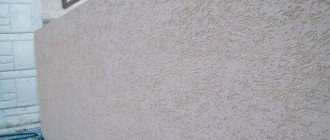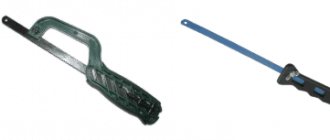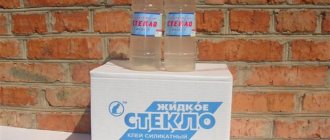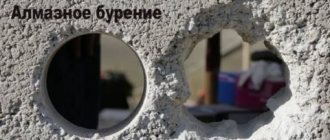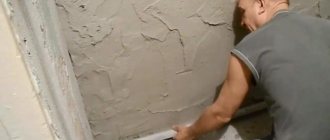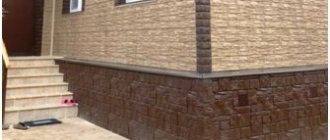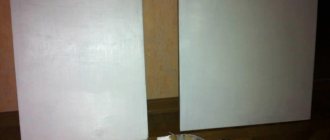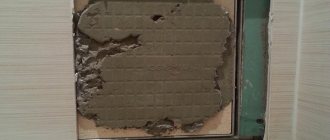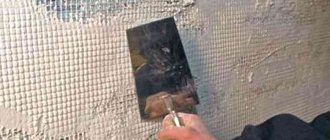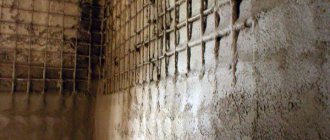The chimney is most often the highest point of the house, the finishing touch in its appearance. It is important to set this point effectively and competently, ensuring the safety of the structure without spoiling the appearance and functionality of the roof. How to do it? The chimney is exposed to adverse factors both outside and inside. Outside, it resists gusts of wind, gets wet in the rain, and in winter, snow accumulates in the “pocket” between its back wall and the surface of the slope. Hot gases, which contain aggressive chemicals, circulate inside it. Moreover, gases do not pass through the chimney constantly, but periodically, exposing the structural material to extreme temperature changes.
So the process of finishing a chimney on the roof can be divided into two parts:
- Insulation and decoration of the pipe: helps neutralize factors acting from the inside .
- Design of the junction with the roof plane: protects the material of the chimney and the roof itself from adverse influences from the outside .
Insulation and decoration
Chimney insulation
The worst enemy of chimneys is condensation. The inner surface of the pipe is very hot, and the surrounding air, in comparison, is quite cold. The steam generated during fuel combustion naturally condenses on the inner walls of the pipe according to the same principle by which dew appears on grass that has not cooled down overnight. However, the liquid formed in chimneys is nothing like fresh transparent dew - it dissolves gaseous oxides formed during fuel combustion and turns into an acid solution! This acid promotes increased corrosion of metal pipes and active destruction of asbestos-cement and brick chimneys. So much moisture can be absorbed into the brickwork that not only the pipe, but also nearby structures will become wet.
Condensate itself is an aggressive substance, and when mixed with ash, which is also always present in flue gases, it forms viscous mixtures that are extremely difficult to remove from the chimney. The sticky deposit that builds up on the walls dries under the influence of hot smoke and can catastrophically reduce the cross-section of the pipe, and even block the exit of gases!
The formation of condensation is not the only problem with an uninsulated chimney. If it’s cold outside and the chimney is made of metal, which by its nature easily heats up and cools down, then the flue gases also cool down noticeably when passing through it. The draft decreases and sometimes even changes its direction - smoke is drawn into the house, and the efficiency of the heating system decreases.
Important! Insulation is necessary in those places where a warm pipe comes into contact with cold air, that is, within an unheated attic and outside the house, after the pipe is brought to the roof.
The point of insulating a pipe will be to reduce the temperature gradient inside and outside it. In this case, condensation will not be able to form, and the exhaust gases will retain their heat.
Chimney finishing: choice of materials
Negative factors affecting the chimney include
:
- atmospheric influences (wind, precipitation, ultraviolet radiation);
- difference in ambient temperatures;
- high temperature operating loads.
Due to the difference between the temperature of the working pipe and the air temperature in the chimney, condensation forms, which provokes destruction of the pipe during the combustion of heating oil
. To avoid the formation of condensation and protect the pipe from external influences, it is necessary to provide reliable insulation of the chimney through lining.
Various materials are used to cover the protruding part of the pipe.
When choosing, you should consider
:
- resistance to external factors, wear resistance;
- appearance and color scheme (matching the roofing or wall decoration of the building).
It is recommended to line the chimney before laying the roofing material to avoid damage or contamination of the roof covering.
slate chimney lining
Finishing a chimney on the roof is most often done using
:
- clinker bricks or tiles;
- plasters;
- cement fiber boards;
- roofing material (corrugated sheeting, slate).
Characteristics of finishing materials
clinker brick chimney lining
Clinker bricks or tiles are a practical option for finishing a chimney, since dirt is not noticeable on such material. The advantages of clinker materials also include the aesthetics of the masonry; such a chimney goes well with any type of roofing.
It is worth noting the resistance of tiles and bricks to weather conditions, temperature changes, as well as the strength of the material. For lining the chimney, exclusively solid clinker bricks are used, laid on a clinker mortar; special compounds are used for grouting joints. Thin, lightweight clinker tiles are usually used for lining tall pipes.
Be sure to read: DIY lightning rod for a private house
Finishing a chimney on the roof with plaster is characterized by
:
- affordable cost;
- simple installation;
- versatility (suitable for any roofing);
- the ability to implement any color schemes (plaster can be painted with silicone paint).
Plastering pipes is carried out using the same technology as finishing facade walls. Traditional cement or lime-cement mortar can be used, but a more durable option is to use mineral, silicone, silicate or acrylic plaster. Painting the dried surface increases the wear resistance and durability of the finish.
finishing the chimney with plaster
Small-format cement-fiber boards are durable, resistant to ultraviolet radiation, moisture, temperature fluctuations, and light in weight. This is an environmentally friendly, non-flammable material. Smooth or structured slabs can be used for lining the chimney; the material is available for sale in a wide range of colors.
If slate is used for roofing, the chimney lining on the roof is usually made of the same material. Slate slabs can be shaped like an arc, flake, rectangle or octagon. The color of this natural material depends on the deposit. This color is usually graphite, green or purple.
slate chimney lining
A fairly simple and inexpensive option for finishing a pipe is to use corrugated sheeting. It is used if the roof covering is made of the same material. The pipe, finished in the color of the roof, looks aesthetically attractive.
pipe lining from corrugated sheets
Manufactured in a factory, the chimney elements for the roof passage have an aesthetic appearance and are quite easy to install. They are equipped with a steel chimney duct and can have a ready-made external cladding made of any material, or be prepared for independent finishing so that the chimney is externally in harmony with the roof.
The modular steel structure is not additionally finished; it is enough to install it at the point of passage through the roofing pie.
modular sandwich chimney
Chimney insulation options
Sandwich chimney
Previously, ceramic, asbestos-cement and metal chimneys were additionally insulated using ready-made heat-insulating cylinders, or “the old fashioned way” - wrapped in mineral wool and secured with wire. But this method is becoming a thing of the past, since now the overwhelming number of manufacturers produce ready-made insulated chimneys. Most often these are steel sandwich chimneys, which consist of two pipes with non-combustible insulation between them. Such chimneys have another unobvious advantage - more relaxed requirements for indoor installation. Insulated chimneys do not heat up as much, which means the risk of ignition of adjacent materials is much lower.
Three-piece ceramic chimney
There are also three-component ceramic chimneys , which also do not require additional insulation. In their composition, the chimney itself, made of refractory ceramics, is insulated with a non-combustible mat and protected by a box made of lightweight cellular concrete.
Selection of plaster
For finishing home stoves and chimneys, only materials that have heat resistance, high elasticity, and strength are used. Conventional mortars will not work in this situation. The most popular mixtures for plastering chimneys are clay and lime, clay and cement, clay and gypsum, mixed.
You can find many options for mixtures on the construction market. Some of them even contain moisture-retaining additives. This makes work more convenient and enjoyable. In addition to fireproof materials, decorative plaster is also often used to finish the outside of the chimney.
Design of junctions with the roof
Any element that goes through the roof is a weak link, a potential leak point. The chimney is no exception.
When thinking through the nuances of sealing the junction, you should take into account the location of the chimney pipe on the roof.
- If the pipe is located on or near a ridge, then sealing the junction is quite easy. This arrangement prevents the accumulation of snow and the flow of water in the immediate vicinity of the pipe.
- If the pipe is located on the middle or lower section of the roof, then the waterproofing of the chimney should be more reliable. Especially in the case of low-slope roofs. You may have to take care of a protective structure - a groove that separates and drains water flows along the sides of the chimney.
- If the pipe is located in the valley, then during any rain or thaw, streams of water flow past it. This is the most difficult pipe location to seal; serious attention should be paid to protecting the rear and side walls of the chimney. Although in general, one should try to avoid placing pipes in valleys by any means necessary.
Why do you need roof pipe lining?
A beautiful chimney completes the architectural ensemble of the building. The roof of a house says a lot about the owner; a lined chimney testifies to a caring owner and even to his wealth. This part of the argument for the aesthetic finishing of the smoke exhaust duct is beyond doubt. However, there are several practical purposes.
Why is the external part of the chimney finished?
- Insulating and lining the chimney extends its service life. During the heating season, the outdoor part of the chimney is subject to sudden and frequent temperature changes. This difference, coupled with the formation of aggressive condensate, leads to the rapid destruction of any chimney material. Insulation allows you to move the freezing point beyond the body of the pipe, reduces the temperature amplitude and prevents the formation of condensation inside the chimney.
- The insulated pipe provides good traction. Uniform and rapid heating of the smoke exhaust channel ensures high-quality draft during combustion. Soot and gaseous combustion products (including carbon monoxide) are quickly and completely removed from the firebox without entering the living space. This condition is decisive for the safety and efficiency of heating equipment.
- Finishing the connection between the pipe and the roof protects the roof from atmospheric moisture entering the roofing pie. The slightest defect in performing these works will lead to damage to the insulation and rotting of wooden structures.
Note! Proper finishing of the chimney pipe can only be done with approved materials. There are officially established standards and rules for carrying out work.
Metal apron
Connecting a chimney to a metal tile roof
The connection between the chimney and the roof can be covered with a metal apron. This option looks great on roofs covered with corrugated sheets, metal tiles, and also on seam roofs. The apron elements must rise above the top points of the coating wave by at least 150 mm. You can “cut” the apron from sheet metal yourself, or you can buy a ready-made prefabricated structure.
Performing stitching
When finishing a brick chimney, additional lining is often required. As a rule, it is needed in the following cases:
- when the masonry was made of simple bricks;
- if the pipe rises above the roof surface to a height of more than two meters, but weak traction is provided.
When finishing the chimney, you can use wood, but there is a risk that the material will absorb condensation
One more point needs to be noted. It concerns air ducts that have a light plastic base. This technical solution assumes that there is no need to install brickwork. In this case, the lining of the chimney pipe simply covers the frame through which this communication passes. To assemble the frame itself, metal profiles or wooden beams with a thickness not exceeding 5x5 centimeters are used.
Important! In this case, the wood must first be treated with an antiseptic. Many modern preparations of this type can give it protection not only from weather conditions, but also from parasites, and also increase its fire resistance.
However, experts regard the use of wood as a controversial decision. After all, wood absorbs condensation well, which forms during significant temperature changes.
One of the most practical methods is to cover the chimney pipe with sheet metal. Installation is quite simple, and the cost of material and labor intensity is minimal. If the thermal insulation is performed at the proper level, strong heating of the skin will be excluded. This will allow you to cover the metal with rubber paint, which will protect it from the effects of negative weather factors and UV radiation. And one more plus - the design will receive additional aesthetics.
Returning to the issue of finishing a brick chimney, the use of decorative stone of natural or artificial origin will add elements of sophistication to it. It is clear that the weight of the cladding increases significantly. In this case, it is necessary to ensure the strength of the fastening using reliable connecting materials, otherwise it may simply fall off the pipe. For example, in addition to the adhesive composition, the edges of the sheathing are fixed with dowels or hardware fasteners.
Waterproofing tapes
Connecting the chimney to the roof without an apron
On roofs lined with piece materials - for example, tiles - a metal apron will look strange. For such roofs, self-adhesive waterproofing tapes are usually used. Large tile manufacturers often produce similar accessories themselves, ideally suited to their main products.
A good example is the Wakaflex polymer roll material, reinforced with an aluminum mesh with butyl self-adhesive strips on the underside of the web and a protective anti-adhesive film.
Sealing joints using Wakaflex tape
To protect the junction of the Wakaflex tape to the wall from possible peeling, as well as from negative environmental influences, metal junction strips are used. They are profiled strips of painted corrosion-resistant aluminum measuring 240x8 cm. The lower part of the strip has a rib that presses the butyl base of the abutment tape, and in its upper part there is a small flange suitable for convenient application of rubber sealant.
Protecting the junction areas of the tape with a clamping bar
These additional elements perform not only utilitarian functions - they make the appearance of the roof complete and harmonious.
What to rely on when developing a project
Appearance and original design are of course important, but before you finish a pipe in the house, you should think about safety. I think you can guess the serious consequences yourself.
So, in order not to make mistakes and not burn down the house, first it would be a good idea to familiarize yourself with the standards. In this case, you should be guided by SNiP 41-01-2003 , it is this instruction that regulates the installation and operation of heating, ventilation and air conditioning. The document is voluminous, so I have written down the main points for you.
SNiP standards 41-01-2003.
- If flammable thermal insulation and finishing materials are selected for the chimney, then their spontaneous combustion temperature should be at least 20ºC higher than the maximum possible temperature of the pipe. The same rule applies to all structures and objects surrounding the chimney within a radius of half a meter;
- Metal products capable of corroding must have an appropriate coating that protects the surface from corrosion;
- The walls of brick chimneys made of heat-resistant bricks should not be thinner than 120 mm. If we are talking about heat-resistant concrete, then the wall thickness of such pipes starts from 60 mm;
- The use of metal and asbestos-cement structures for chimney installation is allowed only if there is a factory quality certificate that allows the use of products at high temperatures;
Finishing of asbestos-cement chimneys.
The use of asbestos-cement and thin-walled stainless steel pipes in furnaces burning coal or coke is strictly prohibited. These materials are not able to withstand the temperature of the gases in such a chimney.
- The mouth of the chimney (the highest point on the roof) must be equipped with an umbrella, deflector or other protective structure that prevents debris and precipitation from entering the chimney. At the same time, protective structures should not interfere with the exit of flue gases;
- The distance from brick and heat-insulated chimneys to roof rafters and other wooden structures should not be less than 130 mm. If a heat-resistant ceramic pipe without thermal insulation is installed, then the safe distance increases to 250 mm.
Deflector made of galvanized sheet.
When you choose both the chimney itself and the finish for the surface of the chimney, inside or outside, you should consider the type of fuel your boiler or stove will run on. The temperature of the flue gases directly depends on this.
| Flue gas temperature depending on the type of fuel | |
| Type of fuel | Temperature of gases in the chimney in ºС |
| Coal and coke | Up to 700 |
| Dry firewood | Up to 500 |
| Fuel oil | Up to 350 |
| Pellets (compressed sawdust granules) | Up to 300 |
| Natural and bottled gas | Up to 200 |
Types of fuel for a solid fuel boiler.
Junction of round chimneys
Connecting round chimneys using the master flush sealing system
- The junction of round pipes can be formed using a metal structure consisting of two parts - the junction itself, as well as an apron - a cap through which the chimney passes. When choosing a steel penetration, be sure to take into account the angle of the roof!
- You can use an elastic design - the so-called “master flush”. It consists of an elastic cap, fixed on the pipe with a clamp, and a metal hoop, which is attached to the surface of the roofing material. The advantage of this option is that it does not need to be selected according to the angle of inclination; the position of the elastic apron on the roof is easy to adjust. But, unfortunately, this option is suitable for a limited number of roofing materials, and tiles are not one of them!
A chimney with smoke rings is an indispensable attribute of houses in children's drawings. As we grow older, we also value warmth and comfort, but we are also forced to think about the safety and reliability of structures. Take care of your chimney at the home design stage, choose the best available materials, order installation from qualified craftsmen and enjoy comfort and functionality!
Selection of material for decorating a chimney inside the house
In a country cottage, a stove or fireplace is usually built in the living room. In this case, the chimney often passes through all rooms and through the ceilings. In this case, it is necessary to harmoniously fit all protruding parts into the interior. This is done in the following sequence:
- First, a frame is constructed from a metal profile. It is then covered with plasterboard sheets. And not ordinary ones, but fire-resistant ones, marked with GKLO;
- To provide thermal insulation, fiberglass or mineral wool is placed inside the frame. The use of such a heat insulator makes it possible to finish the surface of the sheet with any material, and even simple wallpapering is not excluded;
- at the final stage of finishing it is recommended to use gypsum stucco or ceramic tiles. They will highlight the features of any interior style. It is advisable to make some elements in the form of a mosaic, in particular from glass of various colors.
Inside the house, the chimney can be hidden under a high-temperature resistant plasterboard frame
The most durable and durable for interior decoration is clinker brick. It fits perfectly into an interior designed in a minimalist style, and there is often no need for additional decoration.
To create an antique and simple interior finish, plaster is often used. This oldest method still has many adherents.
It must be emphasized that proper thermal insulation of the chimney will make it possible to carry out interior finishing with any material. And the choice of decoration method is determined by taste preferences.

